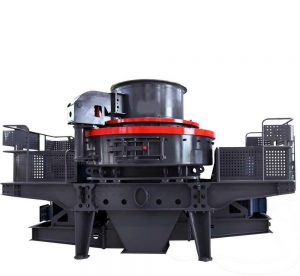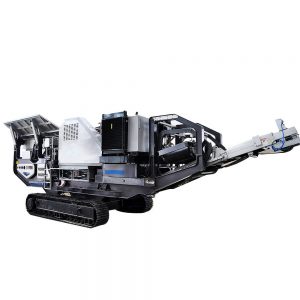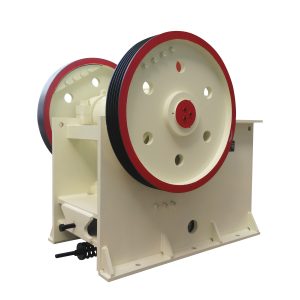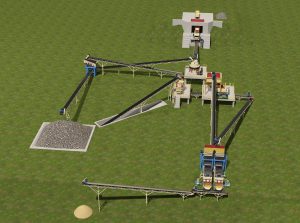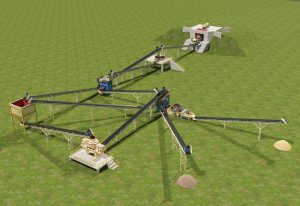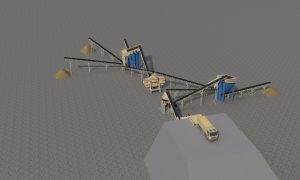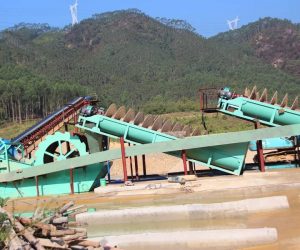The Process of Making Volcanic Sand
Volcanic rock, formed from solidified lava, is a valuable material known for its durability and unique properties. It has wide applications in construction and landscaping, its transformation into volcanic sand is essential for various applications. This blog explores the characteristics of volcanic rock, its uses, and the step-by-step process of converting it into sand. We’ll cover key stages, including feeding, crushing, sand making, screening, and washing equipment. Whether in the mining industry or simply curious, this guide will enhance your understanding of volcanic sand production and its significance.
What is Volcanic Rock?
Volcanic rock is prevalent in regions with volcanic activity, such as the Pacific Ring of Fire, and has various applications, particularly in construction and landscaping.
Characteristics of Volcanic Rock
Volcanic rock possesses unique physical and chemical properties that differentiate it from other rock types. Understanding these characteristics is essential for its effective use in various applications.
Composition: Volcanic rocks are primarily composed of silicate minerals. Common types include:
- Basalt: Fine-grained and dark-colored, basalt is one of the most abundant volcanic rocks.
- Pumice: Light and porous, pumice is formed during explosive volcanic eruptions and can float on water.
- Obsidian: A naturally occurring glass, obsidian is formed when lava cools rapidly, resulting in a smooth, glassy texture.
- Texture: These rocks often have a porous or vesicular texture due to rapid cooling, allowing gas bubbles to form. This texture contributes to lightweight aggregates in construction.
- Color: Volcanic rocks generally exhibit dark colors due to their high iron and magnesium content. However, depending on mineral content and oxidation state, they can also appear in shades of green or even red.
- Durability: Volcanic rocks are famous for their strength and resistance to weathering, making them ideal for various construction applications, including concrete aggregates and road-based materials.
Applications of Volcanic Rock
The unique properties of volcanic rock make it suitable for various industries. Some of the most common applications include: Construction, Landscaping, Agriculture, Filtration
Volcanic Sand Making Process
The process of converting volcanic rock into sand involves several key steps. Here, we will outline the steps in volcanic sand making, from feeding to screening, along with the equipment in the plant.
Step 1: Feeding
The first step in the volcanic rock sand-making process is feeding. It involves transporting the raw volcanic rock to the processing plant. Proper feeding is crucial for maintaining a steady flow of material. It directly impacts the efficiency of the entire operation.
Equipment Used:
- Vibrating Feeders: Vibrating or belt feeders ensure a steady and controllable material flow to the crushing equipment. These feeders can be adjusted to accommodate varying feed rates, optimizing the processing efficiency.
- Hoppers: These hold the volcanic rock. Hoppers can be equipped with sensors to monitor material levels, ensuring a continuous and uninterrupted feeding process.
Step 2: Crushing
Once the volcanic rock enters the system, it undergoes the crushing process. This step crushes materials to smaller sizes and prepares them for further processing. Proper crushing is essential to ensure the efficiency of the subsequent sand-making step.
Equipment Used:
- Jaw Crushers: Ideal for primary crushing, these machines break down large pieces of volcanic rock into smaller fragments. They are known for their high throughput and ability to handle tough materials.
- Cone Crushers: Secondary and tertiary crusher provides finer material and helps achieve the final size specifications. They are particularly effective for producing uniform particle sizes.
Step 3: Sand Making
After crushing, the next step is to produce volcanic sand. This process involves further reducing the size of the crushed rock to create fine sand particles suitable for various applications.
Equipment Used:
- Vertical Shaft Impact (VSI) Crushers: These crushers are suitable for sand making. They use high-speed rotors to throw the crushed material against a hard surface, breaking it into fine sand particles. VSI crushers are known for high-quality sand with a consistent particle shape.
- Hammer Mills: These can achieve finer sand by hammer crusher to pulverize the rock. Hammer mills are versatile and can handle various material types, making them suitable for different stages of the sand-making process.
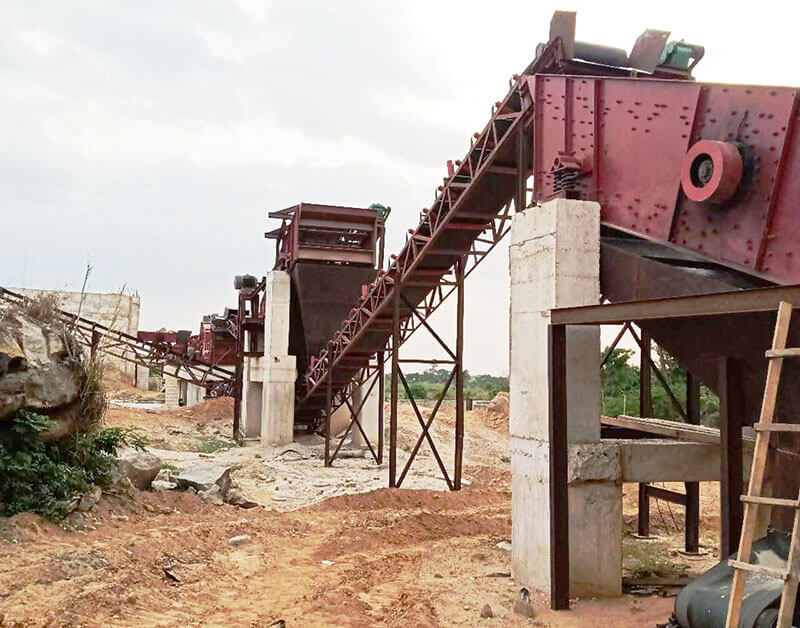
Step 4: Screening
Screen the sand to separate fine particles from larger ones. It ensures that the final product meets quality standards.
Equipment Used:
- Vibrating Screens are essential for separating sand of different sizes. They can be configured to sort particles based on size, ensuring consistent product quality. The use of multiple screen decks allows for efficient separation of various fractions.
- Trommel Screens: These rotating cylindrical screens are suitable for a more thorough separation of materials. Trommel screens effectively remove oversized materials and can handle wet or dry materials.
Step 5: Washing (Optional)
In some cases, washing the volcanic sand may be necessary to remove impurities such as clay, silt, and dust. This step enhances the quality of the final product and ensures compliance with industry standards.
Equipment Used:
- Sand Washers: These machines use water to wash away impurities, resulting in cleaner sand. Sand washers have different production capacities depending on the volume of material
Equipment for Volcanic Sand Processing
Process volcanic rock into sand need a range of equipment . Here’s a overview of the essential machinery:
1. Crushing Equipment
- Jaw Crushers: For primary crushing of large volcanic rocks. Their robust design allows them to handle hard materials.
Cone Crushers: For secondary and tertiary crushing, ensuring the production of finer materials that meet specific size requirements with advanced technology to optimize performance.
2. Sand Making Equipment
- VSI Crushers: Producing high-quality sand with uniform particle size. Their unique design allows for efficient material processing and high throughput.
- Hammer Mills: It is a versatile machine that can handle a variety of materials.
3. Screening Equipment
- Vibrating Screens: Sorting sand by size and removing oversize materials. They can configure in multiple decks to achieve precise separation.
- Trommel Screens: Efficient for fine particle separation. Their rotating design allows for thorough screening, even in wet conditions.
4. Washing Equipment
- Sand Washers: Clean the sand and remove impurities. Their efficient design ensures that the final product meets high-quality standards
Conclusion
Transforming volcanic rock into sand involves multiple steps, each requiring equipment to ensure efficiency and quality. Understanding these processes is crucial for manufacturers and operators in the mining construction industry.
As a manufacturer of mining construction equipment, we are committed to providing high-quality machinery that meets the demands of volcanic rock processing. Whether you are looking for crushers, screens, or washers, our equipment enhances productivity and delivers outstanding results.
Eastman is a professional mining equipment manufacturer with 38 years of rich experience in the mining construction industry. We can also provide lab equipment. Welcome to consult our professional team to get factory prices. According to your situation and product requirements, we will design a complete sand-crushing production line flow chart and provide an accurate quotation.
